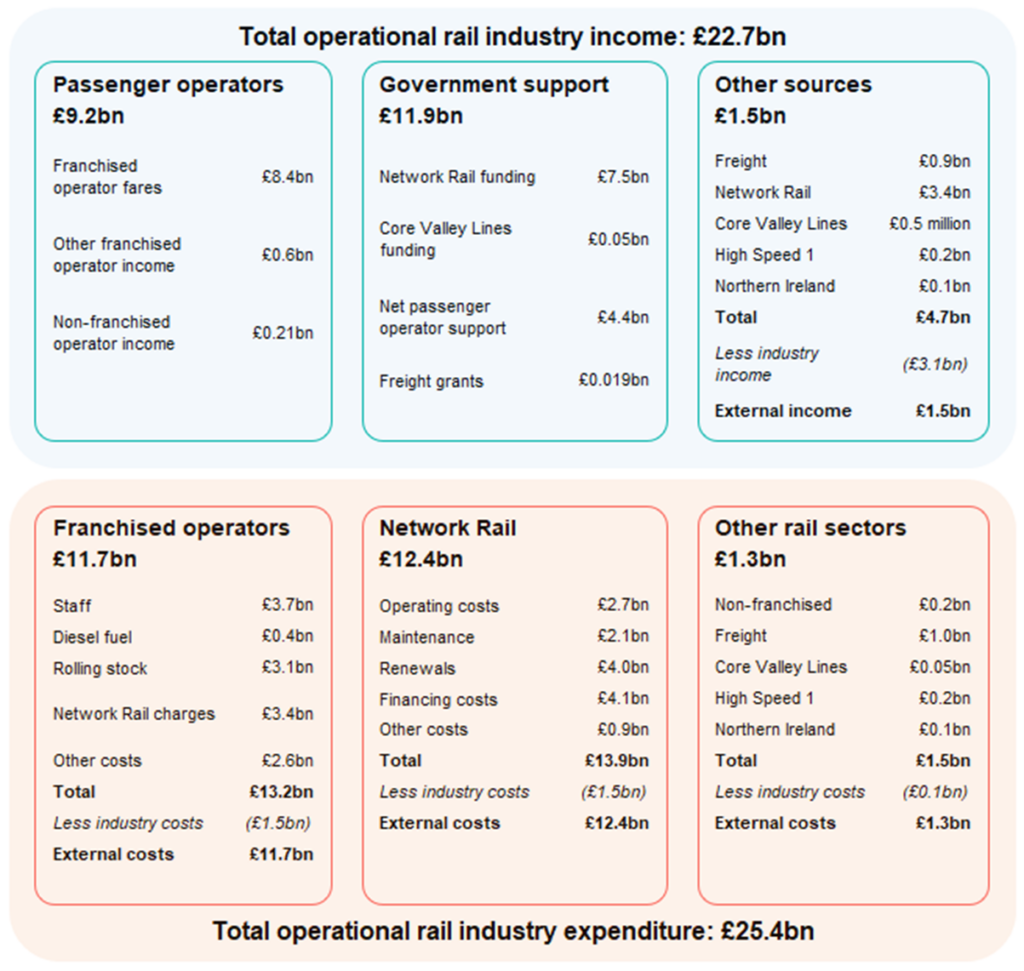The Office of Rail and Road (ORR) has today published its annual Rail Industry Finance (UK) statistical report.
The report shows the income, expenditure and government funding of the UK rail industry for the financial year 1 April 2022 to 31 March 2023.
The latest year saw the introduction of services to the central section of the Elizabeth line generating additional revenue for the industry. However, industrial action across Great Britain resulted in fewer train services than anticipated. Despite this, passenger revenues continued to recover from the impact of the pandemic and government financial support to the industry reduced.
The key findings include:
- A total of 1.4 billion journeys were made in Great Britain. This is 40% more than the previous year with rail usage continuing to recover from the impact of the pandemic and the central section of the Elizabeth line beginning operations. Annual passenger journeys were approximately 80% of the 1.7 billion journeys made between April 2019 and March 2020 (pre-pandemic).
- Fares income in the latest year was £8.6 billion. Adjusted for inflation, this is an increase of 34% (£2.2 billion) from the previous year (April 2021 to March 2022), due to the increase in passenger journeys. However, usage and therefore revenue, was adversely affected by 29 days of industrial action in the year.
- The rail industry as a whole received £22.7 billion of operational income in the latest year (April 2022 to March 2023), and while journeys made increased, the inflation adjusted value of industry income fell by £0.8 billion (3%).
- Governments contributed £11.9 billion to the day-to-day operations of the railway in the latest year, a drop of £2.7 billion (19%) from the previous year. Government funding is now at just over half (52%) of operational income.
- Operational industry expenditure increased by 1% to £25.4 billion but excluding financing costs decreased by 4% to £21.3 billion.
- Investment in new and enhanced rail infrastructure and rolling stock increased to £9.7 billion, an increase of £1.2 billion (15%), largely due to continued investment in High Speed 2 (HS2) at £6.9 billion in the latest year.
- Total public funding for rail operations as well as infrastructure enhancements was £21.1 billion. This consisted of £11.9 billion for day-to-day operations, £6.9 billion towards the continued development of HS2, £2.0 billion for infrastructure and enhancements initiatives, £0.3 billion of miscellaneous support and £0.1 billion for East West Rail.

Will Godfrey, ORR’s director of economics, finance, and markets, said: “Our official statistics are an important barometer of the financial health of Britain’s railways. This year, in the context of rising inflation and industrial action, we see that rail has still continued its post pandemic recovery. Passenger journeys have increased significantly, helped in part due to the Elizabeth line’s opening, and were 40% up on the previous year.
“Our figures also show that as a result of returning passengers, fare revenue continued to rise and that Government support for the day to day running of the railway has reduced.”
The full report can be viewed here.
Image credit: ORR


